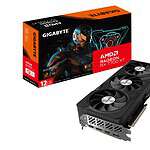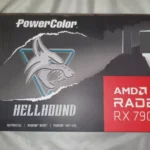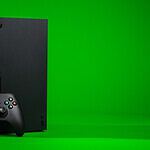Hosting a LAN party can be a thrill for any gaming enthusiast. It’s more than just bringing people together; it’s about creating an environment where gamers can connect, compete, and have fun. To make this happen, you need a few essential things.
You’ll need gaming PCs or consoles, a switch or router, and Ethernet cables to connect everything together. Make sure everyone has their own setup, whether it’s a computer or a console. Having reliable network hardware is crucial, as it ensures smooth gameplay and a great experience for all participants.
Comfort also plays a role in a successful LAN party. Arrange tables and chairs to accommodate everyone comfortably. Space is important to keep things organized and allow gamers to focus on playing. With the right setup, you can easily host a memorable LAN party that everyone will enjoy.
Gearing Up for an Epic LAN Party: The Ultimate Checklist
Hosting a LAN party is a great way to have fun with friends and family while enjoying your favorite games together. To ensure a smooth and enjoyable experience, it’s important to have the right equipment and setup.
Networking Equipment
- Router: The heart of your network, providing internet access to all devices.
- Switch: Connects multiple devices to the network, allowing them to communicate with each other. A multi-port switch is essential for LAN parties with numerous participants.
- Ethernet Cables: Used to connect devices to the switch and router. Make sure you have enough cables for all attendees, and consider having some spares on hand.
Gaming Equipment
- Computers or Consoles: The primary gaming devices for your party. Ensure enough are available or ask attendees to bring their own.
- Monitors or TVs: Displays for each player. If using consoles, ensure they have appropriate input ports for your setup.
- Headphones: A must-have for any LAN party to prevent noise pollution and create a more immersive experience for each player.
- Gaming Peripherals: Keyboards, mice, controllers, and headsets are essential for PC gaming. Ensure compatibility with each system.
Additional Equipment
- Power Strips and Extension Cords: Provide enough power outlets for all devices. Safety first: use surge protectors to prevent damage from power fluctuations.
- Tables and Chairs: Create a comfortable gaming environment with enough seating and table space for everyone.
- Snacks and Drinks: No LAN party is complete without fuel! Stock up on snacks and drinks to keep everyone energized.
Setup Tips
- Plan Your Layout: Arrange tables and chairs to ensure everyone has enough space and can see the screens. Consider traffic flow and access to power outlets.
- Test Your Network: Before the party, connect all devices to the network and test the connection to ensure smooth gameplay.
- Configure Your Games: If you plan to play specific games, make sure they are installed and configured on all devices. Consider setting up dedicated servers for a seamless multiplayer experience.
- Set the Mood: Create a fun and inviting atmosphere with decorations, music, and lighting.
Recommended Equipment
Here’s a table outlining some recommended equipment for hosting a LAN party:
| Equipment Category | Recommended Items | Notes |
|---|---|---|
| Networking | High-speed router, multi-port switch, Ethernet cables | Choose a router with good bandwidth and a switch with enough ports for all your devices. |
| Gaming | PCs, consoles, monitors, TVs, headphones | Ensure compatibility between devices and displays. |
| Additional | Power strips, extension cords, tables, chairs | Prioritize comfort and safety when choosing furniture and power solutions. |
With the right equipment and setup, you can create an unforgettable LAN party experience for everyone involved. Remember to prioritize fun, encourage friendly competition, and enjoy the company of your fellow gamers!
Key Takeaways
- Have enough gaming setups and network hardware.
- Arrange comfortable seating and tables.
- Organize space for smooth and enjoyable gameplay.
Planning and Preparation
Planning a LAN party involves making key decisions about location, games, network setup, power supply, food, equipment, and social interaction arrangements.
Determining Location and Space
The location for a LAN party can be at a home, garage, or a dedicated venue. Space arrangements are important since each participant needs room for their computer setup. For around 2 people, a 6-foot table works well. Make sure there are enough tables and chairs for everyone. Consider lighting and access to power outlets. Planning for these will help maintain comfort and functionality.
Selecting Appropriate Games
Choosing the right games is crucial. Multiplayer games like Unreal Tournament 2004 and real-time strategy (RTS) games are popular. Ensure that everyone has the games installed and updated beforehand. Checking game compatibility with available hardware can prevent issues. It’s also good to have a mix of game genres to keep everyone interested.
Establishing Network Requirements
A proper network setup is essential. Use a reliable router and switches (preferably gigabit switches). Assign static IP addresses or set up a DHCP server to manage IPs automatically. Make sure you have enough Ethernet cables and avoid relying solely on wireless connectivity to prevent lag. Dedicated servers can help manage larger numbers of participants.
Managing Power Supply
Ensure a stable power supply with enough surge protectors and power strips. Extension cords might be necessary for an even power distribution. Avoid overloading power circuits by distributing the power load across different circuits. It’s useful to know the circuit breaker locations in case of power issues.
Organizing Food and Beverages
Plan to have snacks, drinks, and meals available. Pizza, snacks, and beer are popular choices. Having a designated area for food and drinks helps to keep gaming spaces clean. Make sure to have options that suit everyone’s preferences and dietary restrictions.
Setting Up Equipment
Each participant will need a computer, monitor, and peripherals like a mouse and keyboard. Ensure there are enough Ethernet cables and that all necessary software is installed. Network switches should be set up for better connectivity. Doing a test run of the setup can help identify and solve potential issues early on.
Facilitating Social Interaction
Encourage social interaction to make the event enjoyable. Set up common areas where people can take breaks and chat. Use forums or social media to keep everyone informed before and during the event. Organizing mini-tournaments or cooperative sessions can also help build camaraderie.
Keeping these elements in mind during planning and preparation will help ensure a successful and enjoyable LAN party experience for everyone involved.







